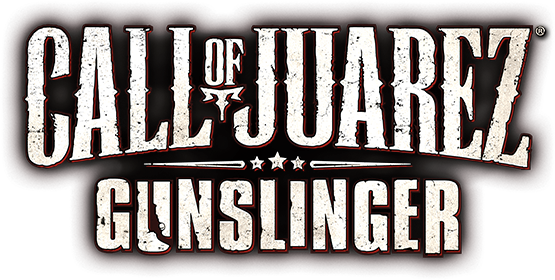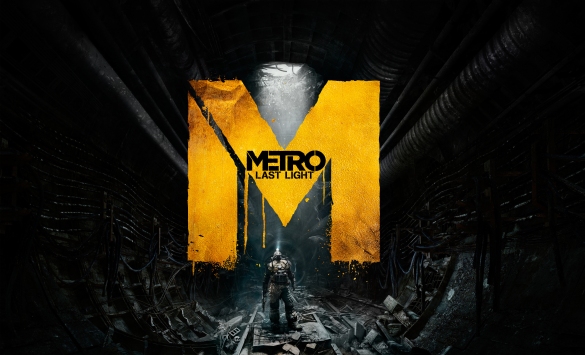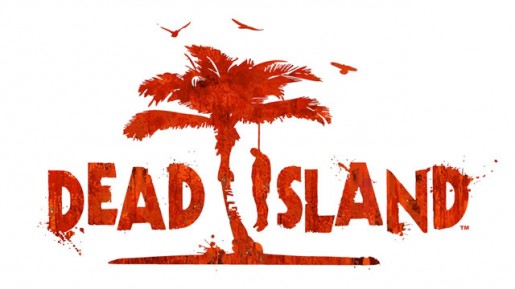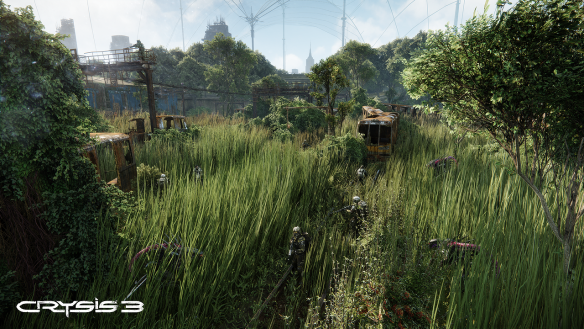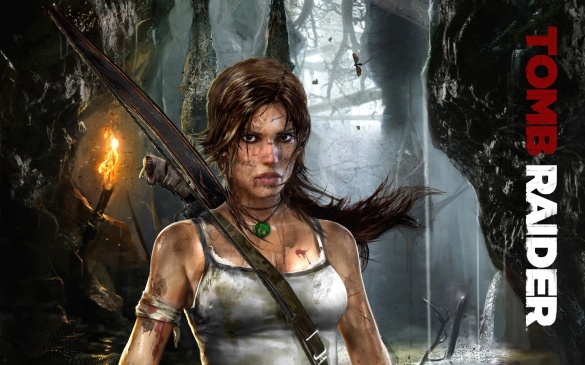 Tomb Raider was not on my radar in terms of a day one purchase, or a purchase at all. Even after seeing footage from E3 and other various developer diary footage, Tomb Raider just didn’t grasp my attention. Maybe it’s because I lived through the birthing of Lara Croft in the 90’s and to reboot a household icon from my adolescence just didn’t really appeal to me. Boy was I wrong. Tomb Raider does everything right in regards to this series and adds just the right ingredients to make this reboot in the running for my game of the year.
Tomb Raider was not on my radar in terms of a day one purchase, or a purchase at all. Even after seeing footage from E3 and other various developer diary footage, Tomb Raider just didn’t grasp my attention. Maybe it’s because I lived through the birthing of Lara Croft in the 90’s and to reboot a household icon from my adolescence just didn’t really appeal to me. Boy was I wrong. Tomb Raider does everything right in regards to this series and adds just the right ingredients to make this reboot in the running for my game of the year.
This origin story following Lara Croft in her archeological infancy has all the trapping of a great action/adventure game. The traversal is tight and satisfying, the shooting is devastatingly gruesome, the story is intriguing enough to keep your attention, and the level layout and design is sprawling and large enough to tug on your adventure strings. The quick-time events and utter beating Lara receives are a bit gratuitous and wear their welcome pretty quick though. Also, the lack of puzzle environments that the Tomb Raider series is known for fall short in this rendition, and the puzzles that are presented are underwhelming at best. Ironically, there aren’t too many tombs either.
The story starts with Lara and her crew getting wrapped up in a vicious storm that inevitably lands them on a mysterious island run by savages, cultist, and an ominous storm that allows no one to leave the island. As Lara and the crew try and escape the island, one of the crew members is kidnapped by the cultists and the adventure truly begins. Lara’s adventure through, up, and around the island is met with a ton of opposing force from the inhabitants. I never felt like the developers rushed her character development and at no point was I wondering how and why Lara was capable of doing some of the things she was — like headshots. I heard from a few reviewers asking how it is that Lara could pull off headshots if she is this supposed novice explorer. My answer is simple, she isn’t — the player is. I feel its a tad ridiculous to fault a game because your good at one particular aspect, but I digress. As in any good game that revolves around adventure and action, Tomb Raider definitely holds its own and has no problem running with the best of them — seeing as the original games broke ground in the gaming industry with their advances in this genre. This newly under sexualized Lara Croft starts off a novice and by the end of the game is transformed into the adventurer we commonly know from the 90’s.
In regards to weapons, Lara starts with a bow and ends up with a handful of upgradable weapons (four to be exact) by the end of the game but not so many weapons where you feel overwhelmed. Crystal Dynamics does a great job of balancing the progression of the weapons Lara gets and how they are upgraded. Lara never picks up weapons from enemies, but instead upgrades the 4 core weapons (pistol, bow, shotgun, and rifle) with salvage she finds on enemies and crates. The detail given to Lara and her utility belt as she picks up these weapons and upgrades are of the highest fidelity. Every time she is given a new device, weapon, or upgrade, Crystal Dynamics makes sure you see it on her person.
The combat in Tomb Raider is vicious and gruesome. Gruesome to the point where, if upgraded properly, Lara is pulling off executions with shotguns to the underside of enemies chins and unapologetically pulling the trigger. Some people might find this egregious (and rightfully so) but the amount of shit Lara is put through from the islands inhabitants would justify her brutality. The cover system I found to be organic, seeing as when Lara entered into a combat situation she automatically crouched behind walls and other objects without button prompts. This led to one of the most enjoyable cover systems to date.
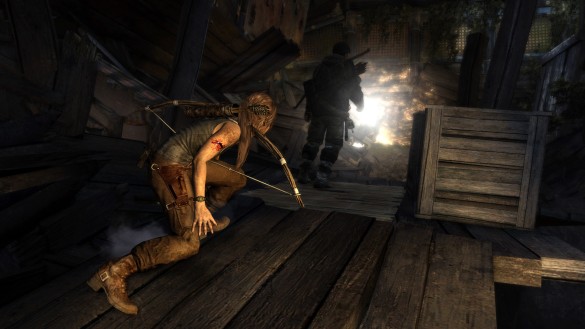
Shhhhhh….I’m going to kill you…
Tomb Raider does an absolutely fabulous job at delivering tight controls and precise button actions that feel satisfying. Never did I find myself locked in an animation where a button press would simply get me out of. The climbing is simple and intuitive and at times when Lara was traversing, the camera would sweep over a cliff or ravine which conjured a great sense of danger and anxiety from the players aspect. The camera angles in Tomb Raider never led you astray as you were traversing and always nudged the player in the right direction. White paint clearly marks areas of climbing and if you ever found yourself confused, the game lends a hand with Survival Vision. This vision clearly marks points of interest in a yellow hue against a white smoky backdrop. This vision is also used to discover collectables and animals.
One of the things that did bother me about Tomb Raider was the overwhelming amount of collectibles, curios, and other documents that lend a hand in telling the backstory. The level design in Tomb Raider is diverse and expansive. Not quite true open-world, but definitely not linear. The collectibles are thoroughly littered throughout the environments, but I couldn’t help getting the sense that the developers didn’t know what to do with all their environmental real estate so they just placed collectables everywhere. Either they did it as a last ditch effort because they couldn’t come up with ideas on how to fill the level or intentionally put their for replay value. Either way, it has good tool for the backstory but Crystal Dynamics definitely could have toned it down with their barrage of useless collectables.
Lara also endures quite a beating throughout Tomb Raider. I mean, were talking every hour or so she is falling 30 feet to her near death. At one point in the game I thought — wouldn’t it be funny if she just landed on her feet and chuckled a little — unfortunately this never happened. So, it got to the point where you could almost time it where she would be falling and falling and falling and falling. It became repetitive and lost its impact after the fifth fall. By the tenth of eleventh fall it just became stale as hell.
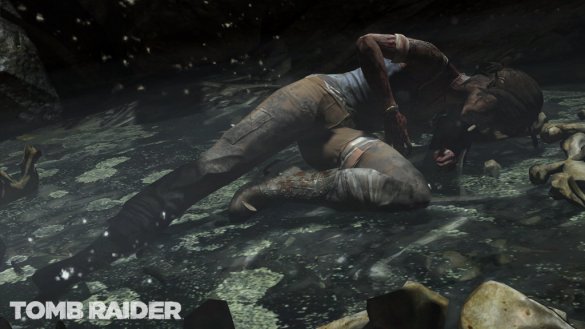
Now is not the best time to take a nap, Lara.
Ultimately, Tomb Raider surprised the hell out of me. Around every corner was something new and different in terms of level design, traversal, and gameplay. The more I played the game, the more I found to like about it. From the sweeping extreme environments to the gruesome executions and even down to the small technical nuances like the myriad of character animations give to Lara from the developers, this game delivered on all fronts. The game does have you back track through levels, but at no point did I find this tedious or boring. As a matter of fact the game does a good job giving you tools and devices that allow you to get to places within the level not otherwise attainable your first passing through. Crystal Dynamics also does an impeccable job of telling the story of Lara’s origin and how she came about to be such a dominant force as an action/adventure icon. If you were questioning yourself about Tomb Raider and how much fun it would be, I can say without a shutter of a doubt that this game is definitely worth your hard earned money. You will not be disappointed.



